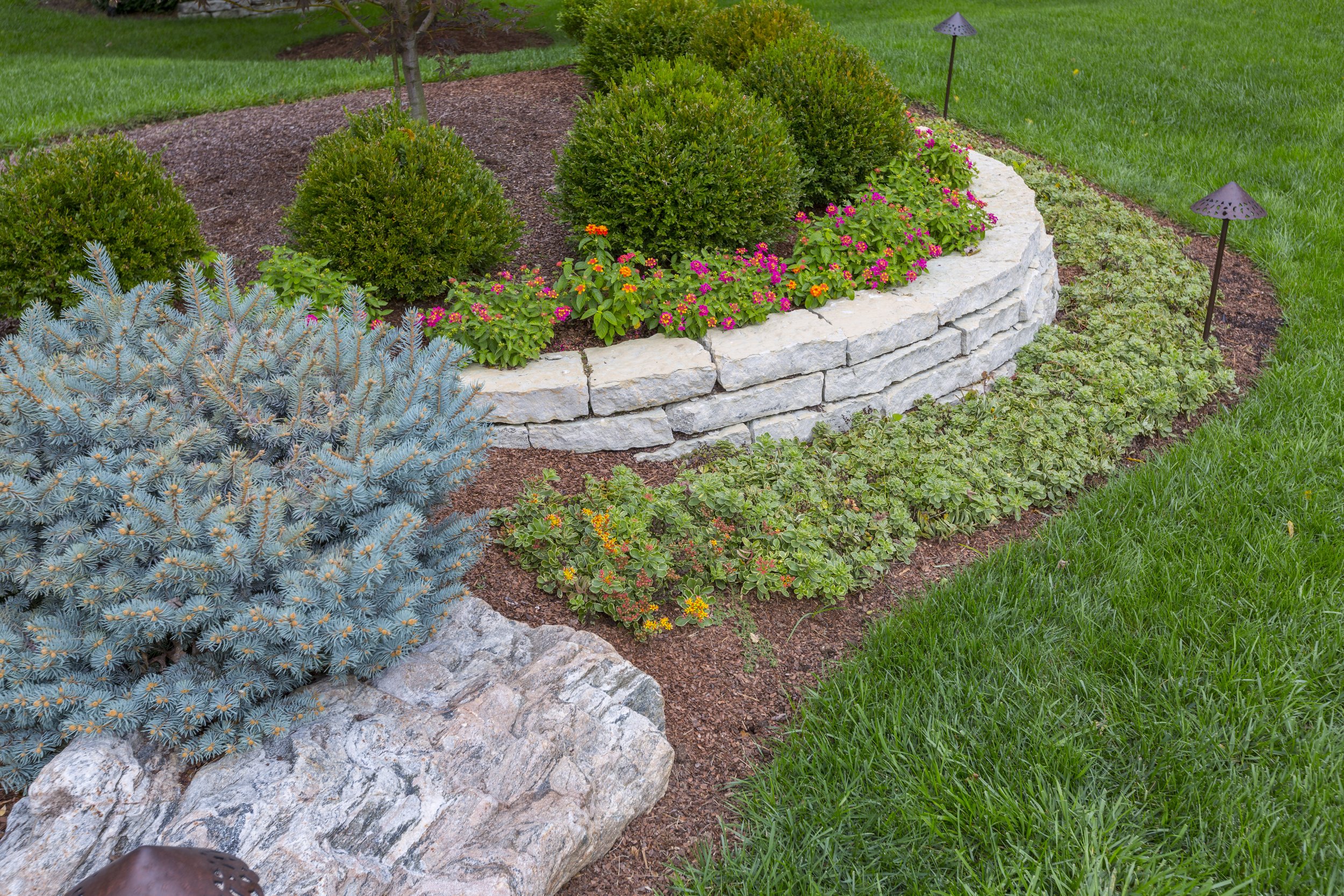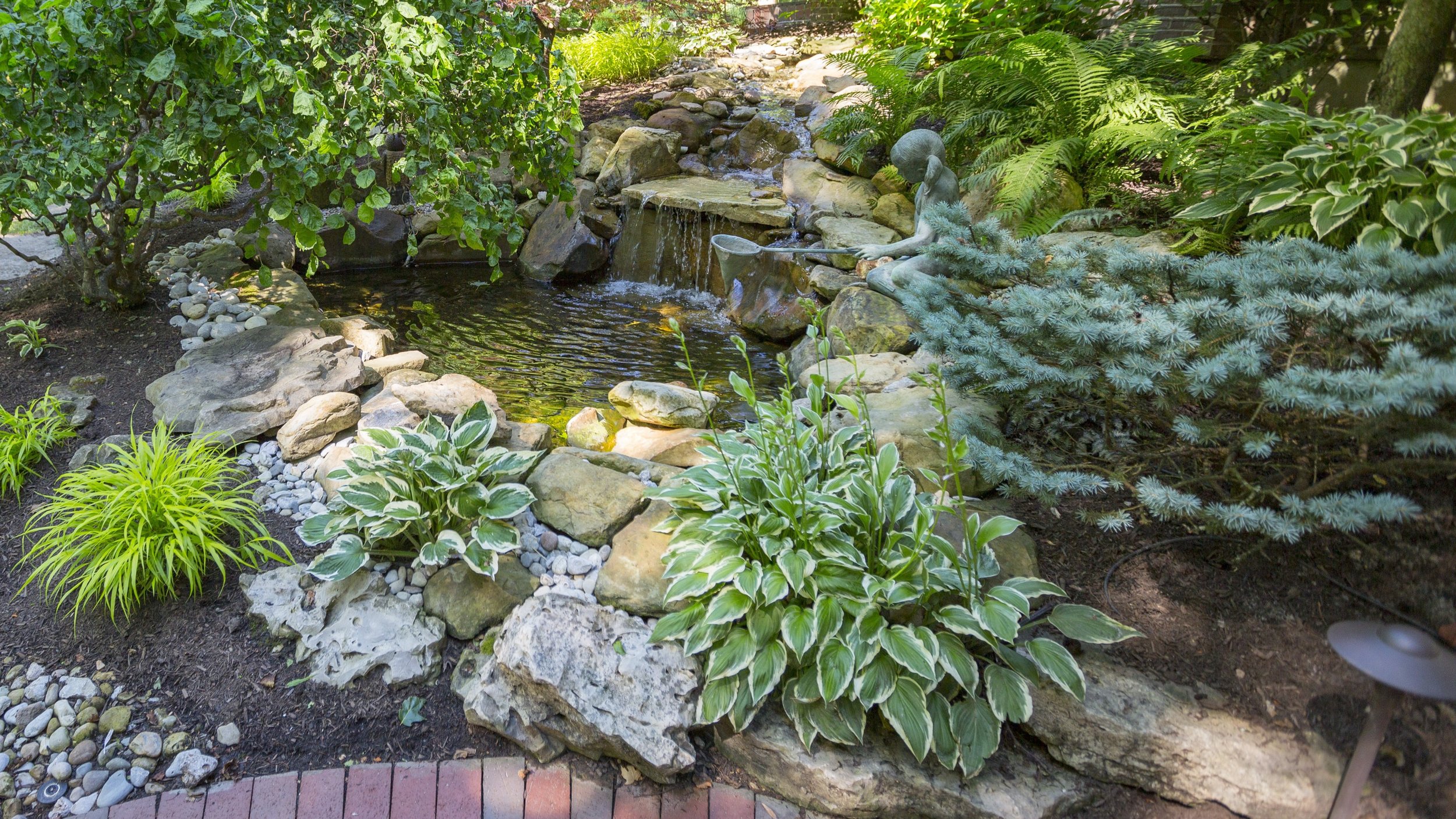Are you wondering about the best perennial favorites for your garden? Not sure which ones you can plant in the fall for a spectacular spring show?
That’s a common experience for homeowners planning out the next year of their landscape. Many get overwhelmed with the choice of so many perennial varieties and necessary planting timelines. The secret is focusing on proven perennial favorites you enjoy that will thrive with fall planting in Southwest Ohio.
Here at Seiler's Landscaping, we know certain perennials will give you the best bang for your buck, thanks to our decades of working with Cincinnati's growing conditions. We recommend the best options for both your planting season and your blooming season.
This article covers the top 10 perennial favorites for Cincinnati gardens to plant in the fall and what makes them such great additions to your landscape.
What Makes Different Plants Perennial Favorites?
Perennials are plants that return year after year. Annuals last for only the year they’re planted, biennials have a two-year life span, but perennials are back in your yard like clockwork. The term "perennial favorites" refers to plants that consistently deliver exceptional performance, beauty and value in regional growing conditions.
Planting your perennial favorites in the fall helps them establish their root systems, takes a time-consuming task off your landscaping to-do in the spring and gives you beautiful blooms year-round. Professional landscapers categorize perennials into distinct types based on their growth habits and seasonal behavior:
Herbaceous perennials
Woody perennials
Deciduous perennials
Herbaceous perennials represent the most common category for residential landscapes. They grow and bloom over spring and summer, then die back to the ground each autumn and winter before returning the following spring. Popular herbaceous perennials include coneflowers, black-eyed Susans, hostas and daylilies.
Woody perennials include shrubs and trees that keep a permanent above-ground structure throughout winter. Unlike herbaceous varieties, woody perennials keep their stems, branches and often their foliage year-round. Examples include roses, azaleas and ornamental trees that provide landscape structure and winter interest.
Evergreen perennials maintain their foliage throughout the year. Plants like bergenia, certain ferns and ornamental grasses offer year-round presence that anchors landscape designs during dormant seasons.
Professional landscapers value perennials because they don’t require yearly replacement, like annuals. Perennials also increase in size and flowering capacity while requiring minimal ongoing maintenance. Your landscaper will select perennials that work best for your vision and your climate conditions.
Top 10 Perennial Favorites for Fall Planting in Cincinnati
Based on decades of professional experience in Southwest Ohio growing conditions, these perennial favorites deliver exceptional performance year after year.
1. Purple Coneflower (Echinacea)
These Ohio native prairie plants are hardy and drought-resistant and establish quickly when planted in early fall. Their root systems develop while the soil remains warm, giving them a head start for spring. Purple coneflowers provide extended bloom periods from summer through fall. This means more time to attract beneficial pollinators that help enhance your garden’s overall health.
Professional installation ensures proper spacing and soil preparation to allow coneflowers to develop their characteristic full, rounded growth habit. The distinctive seed heads provide winter interest while supporting local bird populations throughout the dormant season.
Ohio native: Echinacea purpurea (Eastern Purple Coneflower)
Bloom time: Mid-summer through early fall (July-September)
2. Black-Eyed Susan (Rudbeckia)
Making it through the harsh Cincinnati winter deserves a sunny celebration. Black-eyed Susans welcome early spring with their bright yellow daisy-like flowers. These robust perennial favorites adapt exceptionally well to Cincinnati's clay soil conditions. This makes them perfect for problem areas where other perennials struggle. They also provide months of vibrant color.
Ohio native: Rudbeckia fulgida (Orange Coneflower) and Rudbeckia hirta (Black-eyed Susan)
Bloom time: Mid-summer through fall (July-October)
3. Catmint
Catmint stands out as a stunning addition to Ohio gardens with its exceptionally long bloom time and sun-loving nature. These hardy perennials burst into flower in late spring and continue blooming through fall with proper deadheading, offering landscape color throughout the growing season. Their aromatic gray-green foliage provides textural interest and naturally deters deer while attracting bees and butterflies to sunny garden areas where dependable, low-maintenance performance is essential.
Professional landscapers value catmint for its exceptional drought tolerance once established and its ability to thrive in Cincinnati's hot summers and variable conditions. The variety of cultivars from compact mounding forms to taller varieties allows for sophisticated garden edging, mass plantings and pollinator-friendly landscape compositions.
Ohio native: No native catmints in Ohio (European/Asian natives, but well-adapted to Ohio conditions)
Bloom time: Late spring through fall (May-October with deadheading)
4. Daisies (Leucanthemum)
Known for being low maintenance, daisies come in a variety of forms and thrive in Ohio's climate. These perennial favorites offer exceptional value through their cheerful white-petaled, yellow-centered blooms, reliable performance, and remarkable adaptability to varying site conditions. Their classic appearance brings timeless appeal to any landscape design. Many landscape designers deadhead spent blooms to encourage continued flowering and divide established clumps every two to three years to maintain vigor and maximize the following year's flowers.
Ohio native: No native Leucanthemum daisies in Ohio (European natives, but naturalized and thriving)
Bloom time: Late spring through summer (May-July, with sporadic rebloom if deadheaded)
5. Sedum (Stonecrop)
This succulent-like plant is drought-resistant and offers beautiful fall blooms. Sedums provide structural interest throughout the growing season while requiring minimal maintenance once established. Their late-season flowering extends garden color into autumn when many other perennials have finished their display cycles.
Unlike some perennials, sedums planted in fall require minimal watering and maintenance. That’s good news for busy Ohio gardeners preparing for winter. Professional landscapers appreciate sedums for their reliability in low-maintenance landscape designs.
Ohio native: Sedum ternatum (Wild Stonecrop) and Sedum telephioides (Allegheny Stonecrop)
Bloom time: Late spring to early summer for natives; fall for cultivated varieties (May-June for natives, August-October for garden varieties)
6. Hakone Grass
Ideal for shady areas, Hakone grass comes in many varieties and can provide graceful, cascading foliage throughout the growing season. This ornamental grass offers unmatched versatility for shade gardening with its flowing texture and movement. It also anchors landscape designs with elegant visual interest while softening hardscape edges.
Professional selection among Hakone grass varieties considers mature size, foliage color (golden, variegated or green), and seasonal interest as the grass develops rich amber and bronze tones in fall to create sophisticated shade garden and landscape compositions. The extensive variety available allows for complex design relationships that develop greater impact over time.
Ohio native: No native Hakone grass in Ohio (Japanese native, but well-adapted to Ohio conditions)
Bloom time: Insignificant flowers in late summer; grown primarily for foliage (spring through fall interest, with peak color in autumn)
7. Peonies
For generations, landscape designers have planted peonies in fall throughout Ohio to create legacy gardens that reliably bloom each May. Peonies are so low maintenance they often can be left undisturbed for decades – some can even live for a century. These long-lived perennial favorites are the ultimate landscape investment, and provide spectacular spring displays year after year.
Professional installation of peonies requires precise planting depth and soil preparation. The brief but spectacular bloom period and exceptional longevity make peonies particularly valuable for landscape design teams.
Ohio native: No native peonies in Ohio (Asian/European natives, but long-established in Ohio gardens)
Bloom time: Late spring to early summer (May-June)
8. Irises
Autumn is the perfect time to divide and replant these adaptable perennials in Ohio gardens. The cooling temperatures reduce transplant stress while still allowing time for root development before winter. Many Ohio landscape designers find that fall-divided irises will bloom more prolifically in their first season than if divided in the spring.
Professional landscapers value irises for their architectural foliage that provides structural interest even when plants aren't blooming. The variety of bloom times among different iris types allows for extended flowering displays when properly coordinated.
Ohio native: Iris virginica (Southern Blue Flag) and Iris cristata (Dwarf Crested Iris)
Bloom Time: Late spring to early summer (May-June)
9. Yarrow 'Saucy Seduction' (Achillea)
Yarrow 'Saucy Seduction' is an upright perennial with elegant flat-topped flower clusters colored in vibrant rose-pink shades. With its tolerance for both heat and drought once established, it's perfect for a Cincinnati backyard. Yarrow provides exceptional structural presence in landscape designs while offering long-lasting flowering that complements other perennial favorites.
This tough perennial's feathery, fern-like foliage provides textural interest throughout the season. The extended bloom period, excellent cut flower qualities, and exceptional drought tolerance make yarrow particularly valuable for low maintenance landscape designs. Deadheading encourages continuous flowering and prevents excessive self-seeding.
Ohio native: Achillea millefolium (Common Yarrow) - note that 'Saucy Seduction' is a cultivated variety
Bloom time: Early summer through fall (June-September with deadheading)
10. Allium
This member of the onion family sports distinctive spherical flower heads in purple, pink, blue and white and a subtle onion-like fragrance. Their architectural globe-shaped blooms and striking form isn't just beloved by gardeners; allium will bring bees, butterflies and beneficial pollinators to your yard while naturally deterring deer and other browsing animals. Allium creates dynamic ecosystem value while providing distinctive flowering displays.
Professional landscapers value allium for its dual contribution to landscape beauty and ecological function.
Ohio native: Allium cernuum (Nodding Onion) and Allium canadense (Wild Garlic)
Bloom time: Late spring to early summer (May-July)
Several of these perennial favorites, while not native to Ohio, have been cultivated successfully in the region for decades and are considered well-adapted to local growing conditions. Professional landscapers often combine truly native species with these well-adapted non-natives. This creates diverse, resilient landscape designs that provide extended bloom periods throughout the growing season.
Why Do Perennial Favorites Need Professional Installation?
Professional installation of perennial favorites involves comprehensive soil preparation to address Cincinnati's challenging clay soil conditions. This includes organic matter incorporation, drainage improvement and pH adjustment for long-term plant success.
Proper spacing consideration gives adequate room for mature development without overcrowding. Professional landscapers understand mature plant sizes and growth habits, preventing common amateur mistakes that result in competitive stress and reduced performance.
Professional timing takes advantage of optimal planting windows while coordinating installation with broader landscape development schedules. This systematic approach ensures that perennial installations support rather than conflict with other landscape improvements.
Perennial Favorites Maintenance and Long-Term Care
Professional plantings and landscaping services include ongoing maintenance programs to preserve your perennial installations. This includes seasonal cleanup, pest management and fertilization schedules tailored to specific plant requirements.
Understanding when and how to divide perennials requires expertise in plant biology and growth patterns. Professional maintenance includes division timing that maintains plant health while providing opportunities for landscape expansion and enhancement.
Disease prevention is a crucial component of professional perennial care. Adequate spacing, appropriate watering practices and seasonal cleanup prevent common problems that can compromise plant health and landscape appearance.
Integrating Perennial Favorites With Overall Landscape Design Goals
Perennial favorites serve as foundational elements in comprehensive landscape designs that evolve and improve over multiple seasons. Professional landscapers consider how these plants:
Contribute to overall landscape composition.
Add seasonal color progression.
Provide wildlife habitat.
Have low-maintenance requirements.
Quality perennial favorites can pay dividends through reduced maintenance costs and enhanced outdoor living experiences. They can help create outdoor spaces that provide lasting satisfaction and investment returns.
Understanding how perennial favorites complement hardscape elements, existing trees and architectural features requires professional design expertise. Professionals can create cohesive landscape compositions that feel natural and intentional, not random or disconnected.
Why Choose Perennial Favorites for Your Landscape?
Perennial favorites are called “favorites” for a reason. They provide decades of usually low-maintenance beauty to your landscape. Professional landscape designers will help you understand their long-term benefits and choose the best colors and varieties for your landscape goals.
At Seiler’s Landscaping, we help our clients design the landscape of their dreams, filled with the perennials that will best meet their vision.
Are you ready to establish perennial favorites and enhance your property? We’d love to chat.







